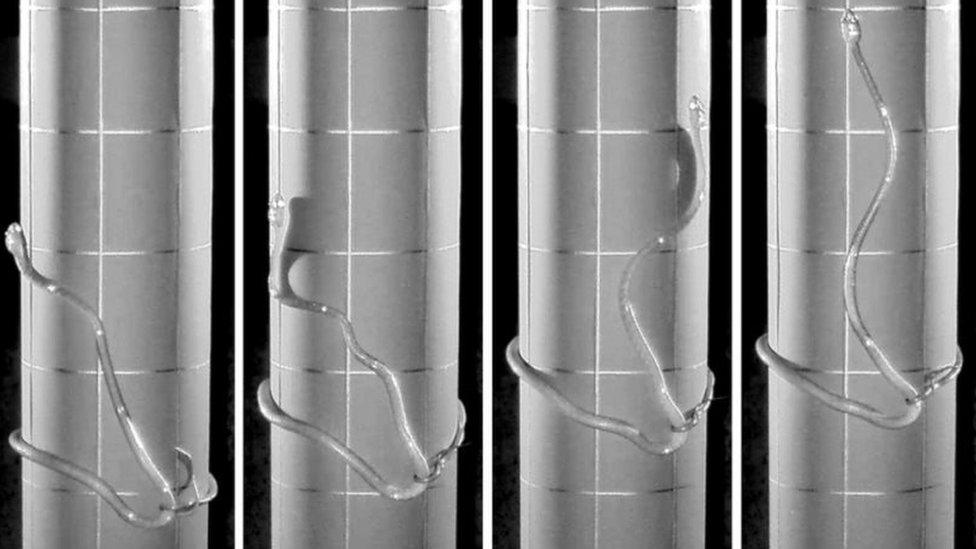Scientists discover new way for snakes to climb
- Published
- comments

Scientists have spotted snakes doing a 'lasso locomotion' to climb up poles and trees
As if snakes weren't sneaky enough, scientists have discovered a new method used by one species to climb super smooth surfaces.
A team of researchers from Colorado State University and the University of Cincinnati have found that brown tree snakes have a way of moving vertically which has never been seen before.
The scientists managed to film these reptiles looping their whole bodies around a smooth cylinder and tying their tails in a knot around themselves - similar to a lasso - in order to gain maximum grip.
They say this previously unknown method of travel allows them to climb large, smooth trees or pipes, wiggling and jiggling themselves in an upwards motion to reach the top.
Co-author of the study, Tom Seibert, said that he and fellow biologist Martin Kastner almost fell out of their chairs when they first observed this new form of locomotion (movement)!
Don't worry about checking your drainpipes - brown tree snakes are not likely to appear in the UK!
"We watched that part of the video about 15 times," Seibert said. "It was a shocker. Nothing I'd ever seen compares to it."
The scientists say this behaviour may explain how this particular breed of snake has been able to prey on birds in trees and climb tall electricity poles, causing all sorts of havoc with power outages.
It is a hugely important discovery as it was previously thought snakes could only travel in four different ways - in straight lines, in side-to-side wave-like movement patterns, side-winding (in a sling-shot style), and concertina motion (moving the body up and down in order to move forwards).
The revelation was actually made by accident during another study which aimed to protect the nests of Micronesia starlings - an endangered species of bird.
Researchers hope the findings will now help people protect them from the snakes.
Don't know about you, but this is number 28947 on our list of why snakes seem ssssss-eriously sneaky!
But don't worry - these snakes are not found in the UK - they are native to coastal Australia, Papua New Guinea and Guam in the Pacific Ocean.
- Published6 September 2019
- Published11 January 2021
- Published17 August 2018
